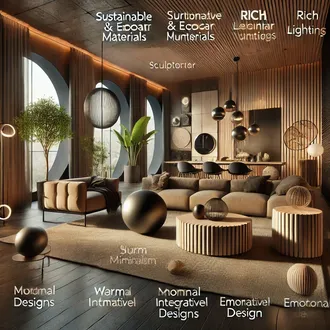Transcription Decoration of the bedroom
Bedrooms are becoming more and more multifunctional, practical and comfortable; however, they continue to be the most personal and intimate space in the home; therefore, their decoration, more than any other space in the home, must take into account the personality traits and interests of those who are going to enjoy them.
The needs of the users of the bedrooms vary fundamentally depending on the age, therefore very different guidelines are followed when decorating bedrooms for children, teenagers and adults.
Guidelines to follow when decorating children's bedrooms
The safety of the furniture, the colors that surround the baby, the excess of light or gloom and the noises that occur in the rooms adjoining the little one's room, are some of the elements that can seriously disturb the mental and physical health of children; hence the importance of taking into account the following guidelines to decorate their bedrooms:
- The decoration of babies' bedrooms should be planned taking into account the subsequent renovations that must be made to meet the needs generated by the growth and development of the little one. For example: the need for a space to crawl, learn to walk and play; the placement of a drawing table, the replacement of the crib, and so on.
- In the baby's room should be placed only the essential furniture - the crib, a closet, a rocking chair and a basket for dirty clothes. The crib should be made of wood as it reduces the risk of accidents more than iron or any other material.
- The colors used should be soft to calm and soothe babies. For example: greens, blues, grays and light pinks. Yellows and dark or exciting shades should not be used.
- Natural light should be abundant, however, it is necessary to control it adequately so that it does not interrupt the baby's sleep. Curtains or other means used to regulate light should not be within reach of children and should be easy to clean so that they do not accumulate dust and microorganisms.
- Two types of artificial light should be designed: a general light, preferably white and relatively intense, to allow for proper observation and care of the baby; and an indirect, warm and dim light to facilitate care throughout the night and help reduce fear of the dark.
- When decorating bedrooms for older children (two years and older), play spaces should be prioritized, and furniture should be designed to neatly store toys. If you do not have enough space, you can design custom-made multipurpose furniture.
- Children from the age of three need spaces to draw, look at books, read, write, do homework, etc.; for this it is essential to provide an area with a table, a chair and focused lighting. At this age, the decorator must take into account the temperament and preferences of the child -their games, colors and favorite toys-; in addition, the decorative accessories that are planned should be aimed at reinforcing values such as love for the family, reading, study, work, etcetera.
Guidelines to follow when decorating bedrooms for teenagers
In most teenagers, the process of psychological maturation, together with the bodily changes typical of puberty, cause a set of controversial behaviors, motivated by their need for autonomy and the non-acceptance of their own physical or spiritual image, which favor their insecurity and instability. Therefore, for the task of decorating their spaces to have the expected results, the following guidelines should be followed.
The decorator must be well acquainted with the tastes and aspirations of the adolescent, since it is essential for them that their criteria be respected and that their considerations and those of their friends be taken into account.
In order to create a more successful decorating idea, the decorator should try to get the teenager to suggest a theme or motif that he/she would like to see reflected in the decor, for example: fashion, technology, make-up, sports, photography, languages, etcetera.
The teenager's bedroom should be conceived as a space that allows him/her to sleep and study, listen to music, meet with friends, exercise, etc. Therefore, in addition to the bed, include in the room other original elements such as hanging chairs, swings and hammocks.
Let the teenager intervene in the choice of the shade of the walls, as well as in the placement of pictures, photos, paintings, decorative lights and other accessories. Remember to always place one or more large mirrors on the walls; teens need to check their physical appearance frequently and privately. Provide plenty of closets and shelves to help them keep their belongings and school supplies in order.
Guidelines to
bedroom decoration




